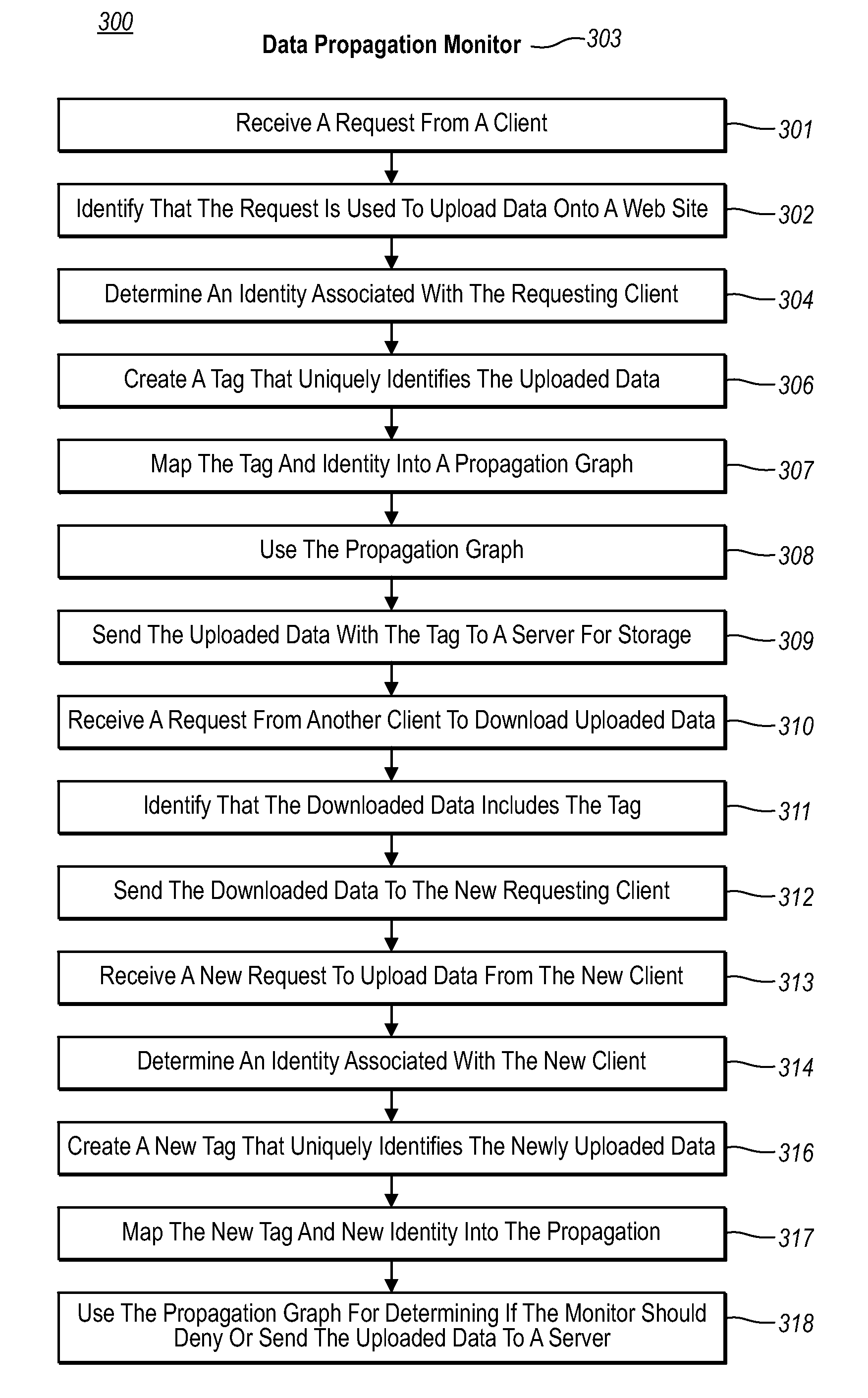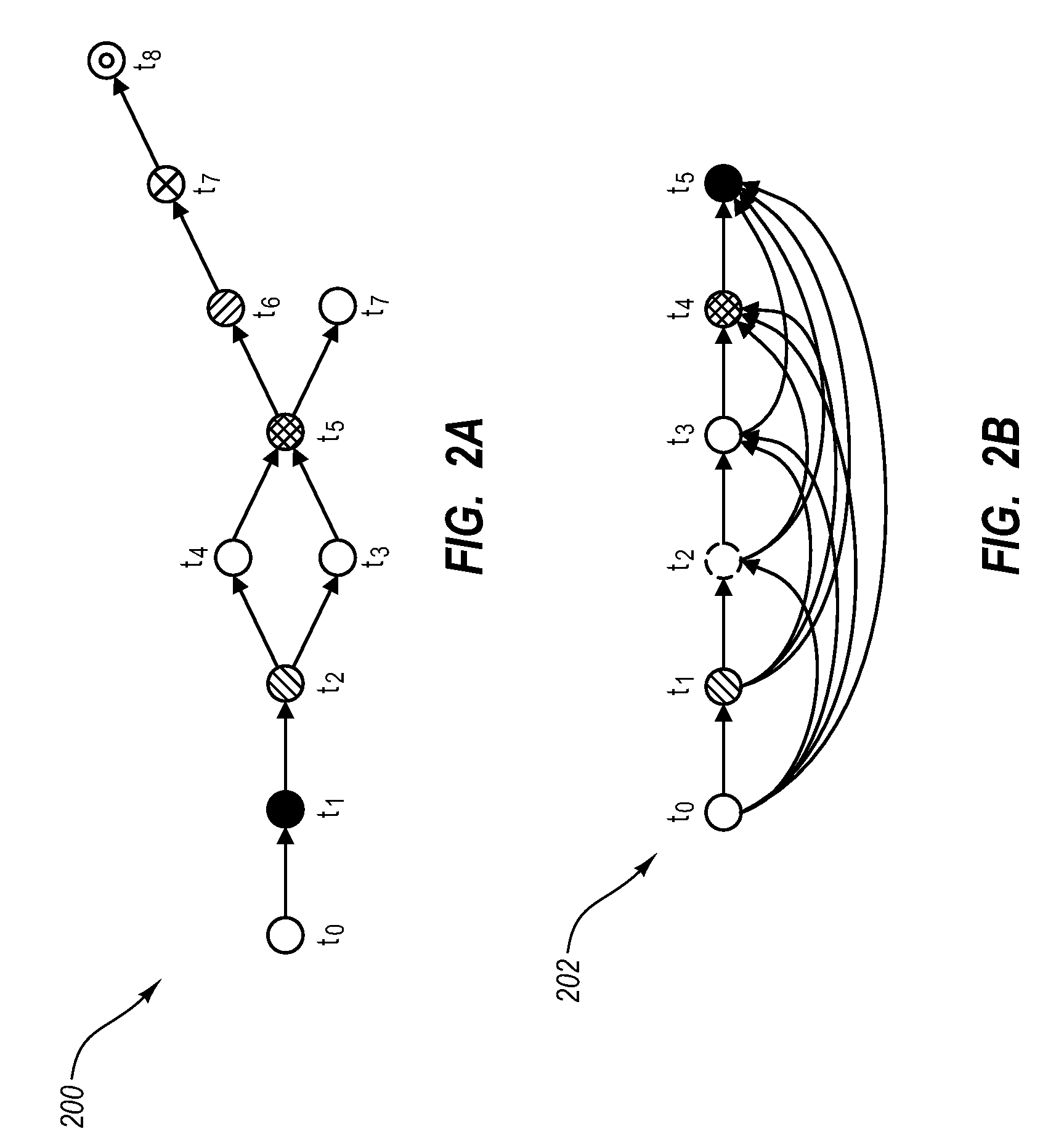Detecting data propagation in a distributed system
a distributed system and data technology, applied in data switching networks, frequency-division multiplexes, instruments, etc., can solve problems such as resource exhaustion, site was still struggling to serve requests at a normal pace, and new and potentially much more destructive breed of security threats typically called javascript worms
- Summary
- Abstract
- Description
- Claims
- Application Information
AI Technical Summary
Benefits of technology
Problems solved by technology
Method used
Image
Examples
Embodiment Construction
[0019]The present invention extends to methods, systems, and computer program products for gathering historical information about data propagation by monitoring requests to and replies from a server. The embodiments of the present invention may comprise a special purpose or general-purpose computer including various computer hardware or modules, as discussed in greater detail below.
[0020]It should be noted that although the goal of some embodiments described herein is to protect Web site users from the adverse effects of worm propagation, example embodiments extend beyond this scope. For example, the use of data propagation can have many uses such as in copy right enforcement, user information exploitation, etc. Accordingly, the purpose of using the historical information gathered for purposes of worm detection are used herein for illustrative purposes only. Similarly, as can be appreciated, the system described herein can be utilized to combat any number of worms; and therefore, an...
PUM
 Login to View More
Login to View More Abstract
Description
Claims
Application Information
 Login to View More
Login to View More - R&D
- Intellectual Property
- Life Sciences
- Materials
- Tech Scout
- Unparalleled Data Quality
- Higher Quality Content
- 60% Fewer Hallucinations
Browse by: Latest US Patents, China's latest patents, Technical Efficacy Thesaurus, Application Domain, Technology Topic, Popular Technical Reports.
© 2025 PatSnap. All rights reserved.Legal|Privacy policy|Modern Slavery Act Transparency Statement|Sitemap|About US| Contact US: help@patsnap.com



